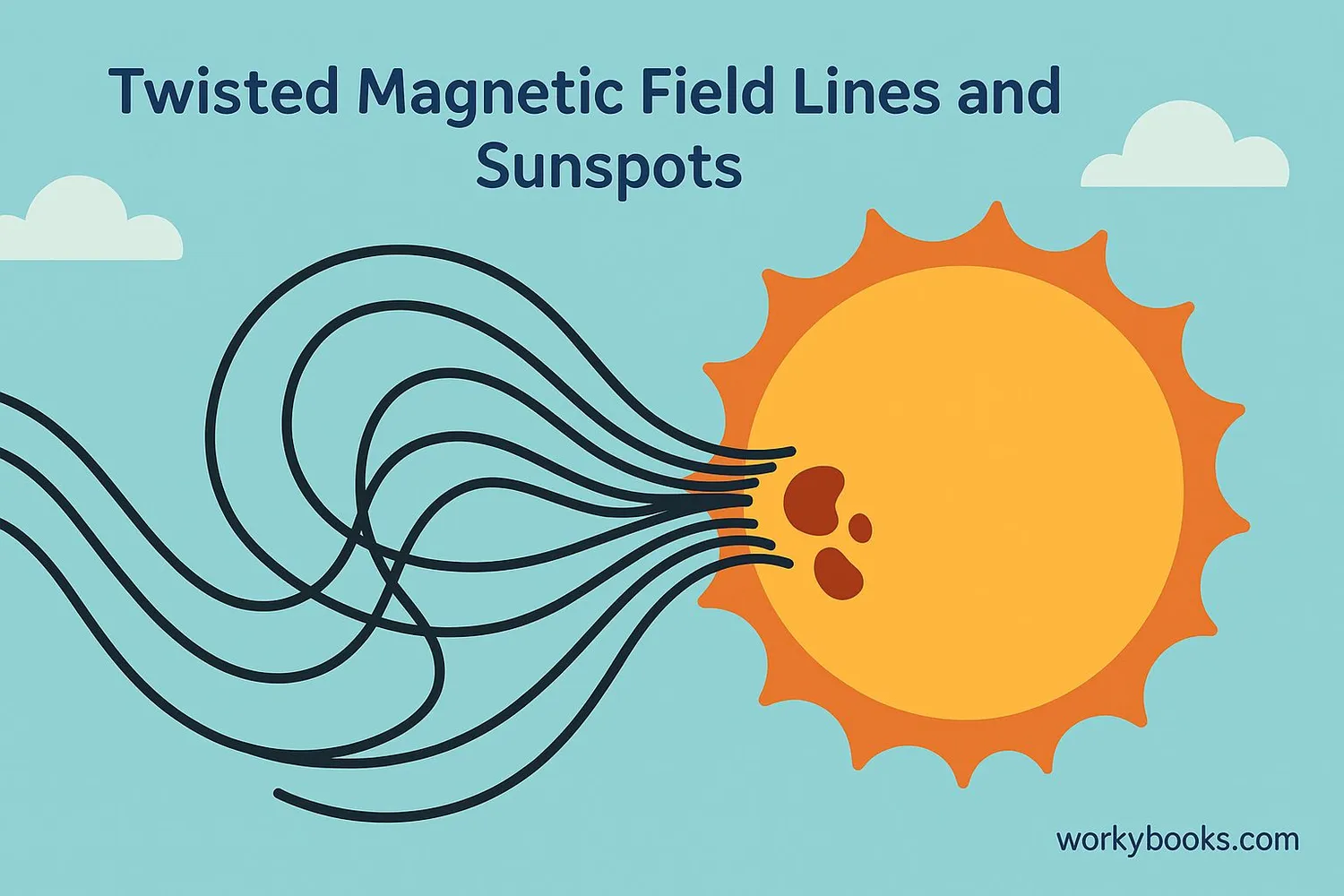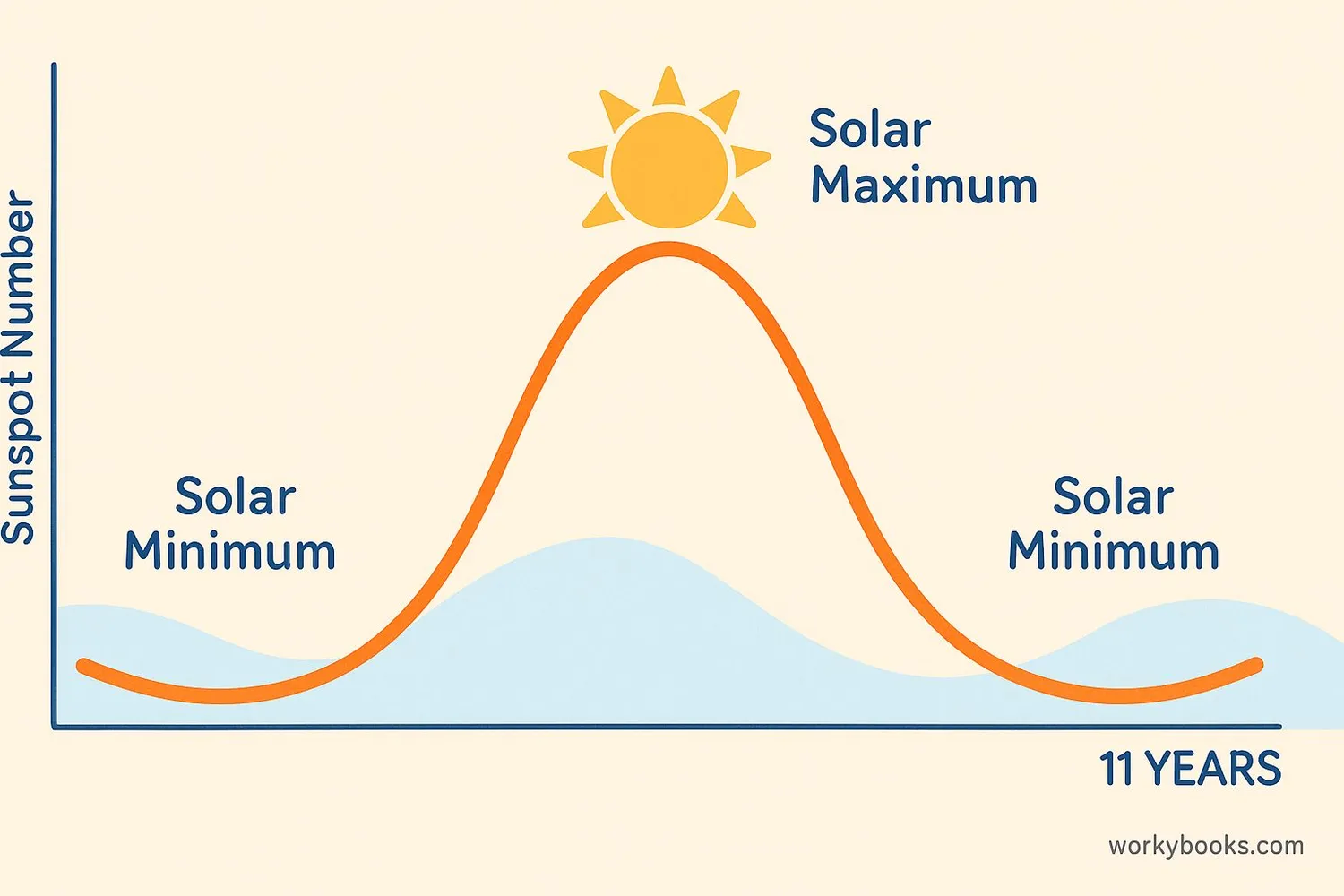Sunspots - Definition, Examples, Quiz, FAQ, Trivia
Learn about these fascinating dark spots on our Sun and how they affect space weather
What Are Sunspots?

Sunspots are dark, cooler areas that appear on the Sun's surface. They look like dark spots because they're about 1,500°C cooler than the surrounding solar surface (which is about 5,500°C). Even though they're cooler, sunspots are still extremely hot - around 4,000°C!
Each sunspot has two main parts:
• Umbra: The dark center (like the shadow of an eclipse)
• Penumbra: The lighter outer area (like the partial shadow)
Sunspots can be as small as Earth or as large as Jupiter! They usually appear in groups and can last from a few days to several months.
Did You Know?
The largest sunspot group ever recorded was in 1947 - it was about 40 times wider than Earth!
How Sunspots Form

Sunspots form because of the Sun's magnetic field. Here's how it happens:
Magnetic Fields
The Sun's magnetic field gets twisted as different parts rotate at different speeds
Field Lines
Twisted magnetic field lines push up through the Sun's surface
Cooler Areas
The strong magnetic fields prevent hot gas from rising, creating cooler spots
Sunspot Forms
These cooler areas appear darker against the hotter surrounding surface
The magnetic fields in sunspots are thousands of times stronger than Earth's magnetic field! These strong fields can also cause solar flares - huge explosions on the Sun that send energy and particles into space.
Magnetic Power
A typical sunspot's magnetic field is about 2,500 times stronger than Earth's magnetic field!
The Solar Cycle

Sunspot activity follows an 11-year cycle called the solar cycle:
Solar Minimum
Few or no sunspots appear on the Sun's surface
Rising Activity
Sunspots gradually increase over about 4 years
Solar Maximum
Peak sunspot activity with many large groups
Declining Phase
Sunspots decrease over about 7 years to minimum
Scientists track solar cycles using the Wolf number, which counts both individual sunspots and sunspot groups. The most recent solar maximum was in 2014, and the next is predicted around 2025.
During solar maximum, we see more:
• Solar flares (sudden brightenings)
• Coronal mass ejections (huge bursts of solar material)
• Auroras (Northern and Southern Lights)
Sunspot Knowledge Quiz
Test what you've learned about sunspots with this 5-question quiz.
Frequently Asked Questions
Common questions students ask about sunspots:
Solar Trivia
Amazing facts about sunspots and our Sun:
Ancient Observations
The earliest recorded sunspot observations were by Chinese astronomers in 28 BCE, who described them as "flying birds" on the Sun's surface.
Massive Features
Some sunspot groups are so large they can be seen without magnification when the Sun is dimmed at sunrise or sunset (with proper eye protection).
Cycle Variations
While the average solar cycle is 11 years, cycles have ranged from 9 to 14 years since records began in 1755.
Modern Tracking
Today, NASA's Solar Dynamics Observatory takes high-resolution images of the Sun every 12 seconds to track sunspots and solar activity.





